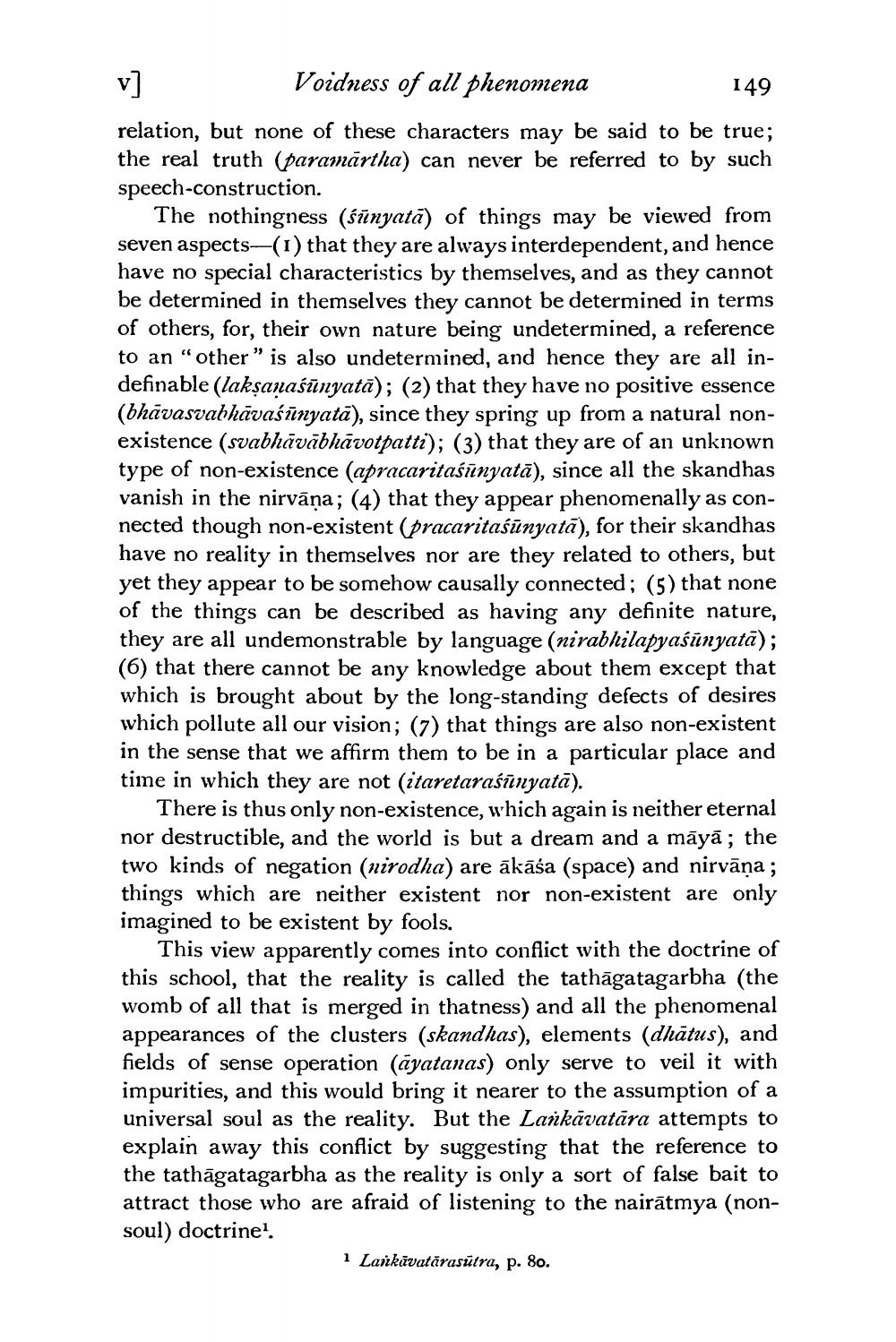________________
Voidness of all phenomena
149 relation, but none of these characters may be said to be true; the real truth (paramārtha) can never be referred to by such speech-construction.
The nothingness (śünyatā) of things may be viewed from seven aspects—(1) that they are always interdependent, and hence have no special characteristics by themselves, and as they cannot be determined in themselves they cannot be determined in terms of others, for, their own nature being undetermined, a reference to an “other” is also undetermined, and hence they are all indefinable (laksanaśünyatā); (2) that they have no positive essence (bhāvasvabhāvašīnyatā), since they spring up from a natural nonexistence (svabhāvābhāvotpatti); (3) that they are of an unknown type of non-existence (apracaritaśūnyatā), since all the skandhas vanish in the nirvāņa; (4) that they appear phenomenally as connected though non-existent (pracaritaśūnyatā), for their skandhas have no reality in themselves nor are they related to others, but yet they appear to be somehow causally connected; (5) that none of the things can be described as having any definite nature, they are all undemonstrable by language (nirabhilapyaśānyatā); (6) that there cannot be any knowledge about them except that which is brought about by the long-standing defects of desires which pollute all our vision; (7) that things are also non-existent in the sense that we affirm them to be in a particular place and time in which they are not (itaretaraśīinyatā).
us only non-existence, which again is neither eternal nor destructible, and the world is but a dream and a māyā; the two kinds of negation (nirodha) are ākāśa (space) and nirvāņa; things which are neither existent nor non-existent are only imagined to be existent by fools.
This view apparently comes into conflict with the doctrine of this school, that the reality is called the tathāgatagarbha (the womb of all that is merged in thatness) and all the phenomenal appearances of the clusters (skandhas), elements (dhātus), and fields of sense operation (ayatanas) only serve to veil it with impurities, and this would bring it nearer to the assumption of a universal soul as the reality. But the Lankāvatāra attempts to explain away this conflict by suggesting that the reference to the tathāgatagarbha as the reality is only a sort of false bait to attract those who are afraid of listening to the nairātmya (nonsoul) doctrinel.
i Larkivatārasūtra, p. 80.




